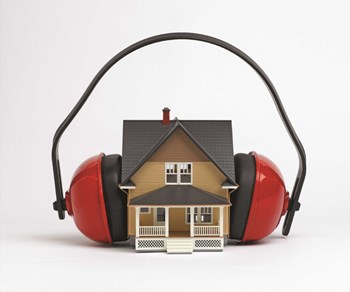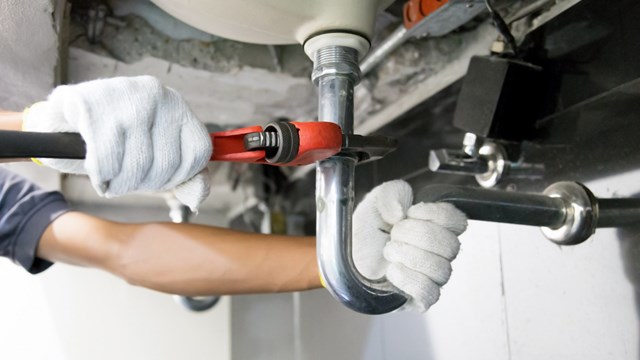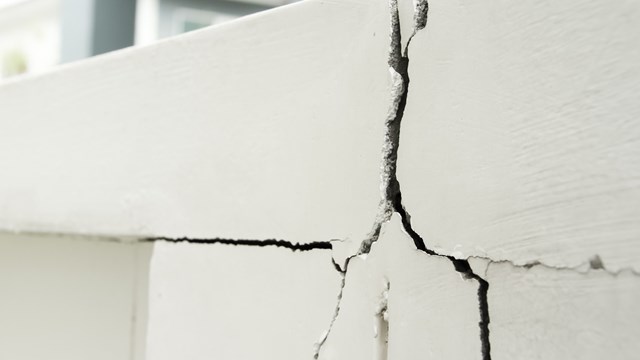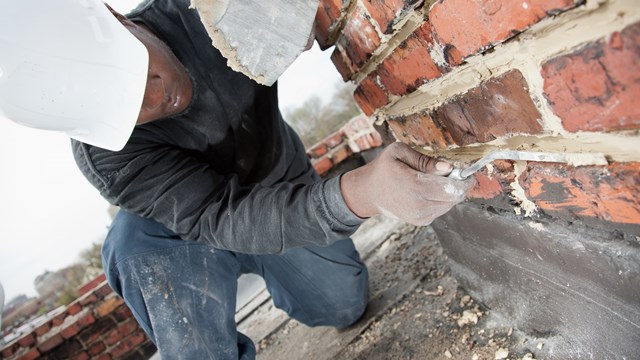
Noise is a key quality-of-life problem for almost anyone living in a densely-packed urban environment. It's the bane of many a condo-dweller’s existence, and over the years engineers, architects, and designers have tried any number of ways to reduce the problem of noise in multifamily buildings—some more successfully than others.
Let’s make some noise about soundproofing.
When Noise Annoys
As long as people have ears and the ability to use them and live in closed quarters with others, there will be problems with noise. It’s just human nature.
“The biggest noise complaint is being able to hear your neighbors, either through a common wall or in the apartment above or below,” says David Ingersoll, national sales manager for Acoustical Solutions in Richmond, Virginia. With shared walls, the noise tends to be blaring music or television sets, overly loud conversations, or the strident smack of slammed doors. “Floor to floor, it’s more footfall noise.”
Mandy Kachur, a principal consultant with Soundscape Engineering in Ann Arbor, Michigan, and the vice president of public relations for the Institute of Noise Control Engineering/USA says, “Sounds that are transient, that come and go, that start and stop”—like hammering a nail into a wall—“or tonal noises, like whistles, tend to be more annoying than a steady broadband of white noise”—like the hum of a washer and dryer.
What distinguishes sound from noise, however, is the ear of the beholder. “Complaints arise from the noise that someone else is making,” says Kachur. “It doesn’t matter how much noise you make.”
How noise complaints are handled, legally, depends on local law. In Florida, Ingersoll says, “some counties and cities have stricter codes, some have looser ones. They’re enforced to how they’re written, to how in-date or out-of-date they are.” This goes for condominiums, too, where noise regulations are generally spelled out in the bylaws or the house rules.
One way to quiet noise complaints, especially in new construction, is to build condominiums that have adequate soundproofing.
A Brief History of Acoustics
Room acoustics date back to ancient times. The Greek amphitheaters and the Roman Coliseum, Kachur says, are designed the way they are in part to help the projection of sound. The opera houses that sprang up in Europe from the Renaissance on tend to have superb acoustics, although the thinking is this was achieved more by trial and error and less by scientific insight. “A lot of the older designs, there’s a debate about whether they were designed on purpose, or if it’s more attrition—the good ones are the ones that survived.”
Modern acoustics and sound engineering begins on the campus of Harvard University, with a physics professor named Wallace Clement Sabine. Charged with repairing the acoustics of recently completed Fogg Lecture Hall, which could not function as a lecture hall because no one could understand the lecture. Sabine, who had no formal training in acoustics, undertook a series of experiments to determine the cause. He wound up discovering the precise relationship among the size of a room, the precision of the sound, and the amount of absorption surface as variables in how a space reacts to sound. The sabin, a unit that measures sound absorption, is named for him.
Sound quality did not become a factor in residential buildings until fairly recently. “Builders started paying attention to soundproofing in the 1970s,” Ingersoll says, when the U.S. Department of Housing and Urban Development’s Office of Policy Development and Research issued its groundbreaking, if not eardrum-shattering, Noise Assessment Guidelines.
The guidelines, according to Benjamin Bobo of HUD’s Office of Policy Development and Research, “were developed to provide HUD field staff, interested builders, developers, and local officials with an easy-to-use method of evaluating noise problems with a minimum of time and effort.”
“The only problem is, it’s expensive, and adds costs to building. Builders got more interested in it as codes got stricter, especially in luxury buildings. Until it started getting enforced, and they had to adhere to HUD standards, it wasn’t completely used.”
Sound, By the Numbers
There are three grades, per HUD, given buildings as it pertains to noise. Grade 1 is luxury; grade 3 is the aural equivalent of living in a cardboard box on Biscayne Boulevard; grade 2 is everything else.
STC, or sound transmission class, pertains to what’s called airborne sound—voices, music, dog barks, your neighbor’s kid practicing her violin, and so forth.
The American Society for Testing and Materials (ASTM) has developed a ratings system that assigns an STC number to building materials corresponding to how effectively it diminishes the transfer of noise. This number derives from a mathematical formula involving sound attenuation values and transmission loss curves and other technical data. A low number indicates sound flowing easily through the wall—a rating of 25, for example, means you can hear conversations as if the wall didn’t even exist. Forty is the baseline number, the minimum rating for what acoustical engineers call “privacy.” Anything above 60 and, as they say in horror movies, you’ll never hear them scream.
“The luxury grade has higher acoustical ratings than average grade,” Ingersoll says.
These ratings are used not only to test the quality of sound from room to room, but also to determine where a residence may be built in the first place. “The guidelines provide a means for assessing separately the noise produced by airport, highway, and railroad operations,” Bobo says, “as well as the means for aggregating their combined effect on the overall noise environment at a site.” Builders cannot construct a condominium too close to Miami-Dade Airport, for example, because of HUD restrictions on STC.
The other sound measure is IIC, or impact insulation class, which measures “impact” sounds, such as the clack-clack-clack of the stiletto heels worn by your upstairs neighbor as she walks around her ceramic-floored kitchen at 5 a.m.
“The biggest challenge now is IIC numbers,” Ingersoll says. “Years ago, it wasn’t an issue, because people used an awful lot of wall-to-wall carpeting. Now, they want hardwood floors, they want ceramic tile,” and those materials don’t naturally dampen noise. “Because there’s no longer a cushion above the floor, it must now be under it.”
The solution is to have a layer of one of many materials—recycled rubber or recycled wood are two common choices—beneath the floorboards.
Soundproofing
You know the old saying about walls being “paper-thin?” As it turns out, thin walls do allow the most noise to pass through. The first rule of quality soundproofing, then, is thicker walls.
“The wall has to have some mass to it,” says Kachur. “Something heavy. Heavy materials block sound.” Concrete blocks work better than wood and wood works better than glass.
“Any time you have a weak element, it impacts the sound quality,” she says. “Windows are not as good as walls. Any gaps in the wall should be caulked.”
There are many materials, old and new, that can achieve this effect, depending on the needs of the building. “You have to have a lot of bullets in your gun in this line of work,” says Ingersoll.
Cork, the old standby used famously by the novelist Marcel Proust in his Paris apartment, is still effective at blocking sound—mostly impact sound. Because it is renewable, it has its apologists among green builders as an under-layer in flooring. But cork breaks down fairly quickly.
Serious Energy, a Sunnyvale, CA soundproofing and energy management company, makes a form of damped drywall called QuietRock. A technique called constrained air damping is used to dull vibrations—in effect blanketing soundwaves. “It’s like a shock absorber,” Kachur explains. These materials are specifically engineered to dull the sound in the frequencies of human speech, she says.
There are two problems with soundproofing. The first is price. “It’s very expensive,” Kachur says. “If you build a five-story condo—that might be prohibitively expensive. But to soundproof the downstairs video room? That’s probably worth it.”
The second problem is—it’s an arduous job to soundproof a condo that someone lives in. The place has to be gutted, with new layers added to the floor, ceiling, and walls.
“The hardest part is, once people are in, it’s almost too late,” says Ingersoll. “They need to be built through beforehand.”
So if you’re planning on buying a condo or an apartment, you’d better be sure and know how it sounds at Saturday night, or early in the morning. If it’s too noisy, once you move in, you’ll never hear the end of it.
Greg Olear is a freelance writer and a frequent contributor to The South Florida Cooperator.






Leave a Comment